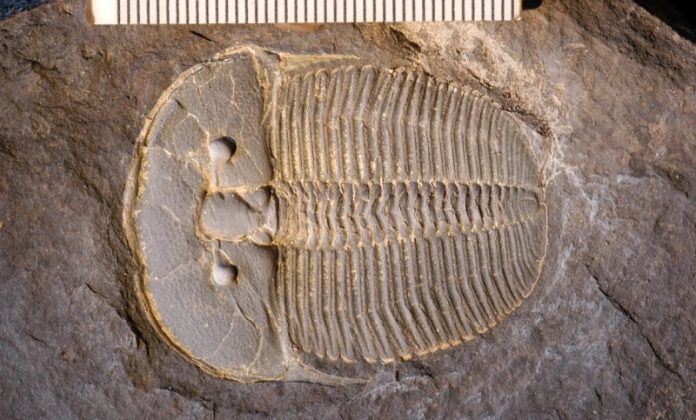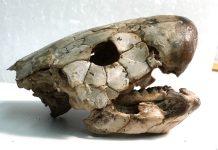
Have you ever heard of trilobites?
Imagine bugs living in the sea hundreds of millions of years ago, long before the dinosaurs.
These ancient creatures had hard, armored bodies and lived on Earth for nearly 300 million years, starting around 520 million years ago.
In fact, they lived so long that they survived two big events where lots of other species died out.
Most trilobites had a similar body structure: a head, a middle part, and a stiff tail. The interesting thing is that while most trilobite species had a fixed number of segments in their middle part, there was one species that stood out.
This unique species is called Aulacopleura koninckii. Young ones looked almost the same, but as they grew up, they had anywhere from 18 to 22 segments in the middle section.
This was surprising to scientists because it’s like finding people with different numbers of bones in their backs. One scientist, Nigel Hughes, found it really strange and decided to study it more closely.
Hughes and his team wanted to know why Aulacopleura was different and how this change helped them survive from predators.
Now, trilobites had a cool trick to stay safe: they rolled up like a ball, similar to the little “rollie pollies” or pillbugs we might find in gardens today. When they rolled up, their soft parts were hidden and protected by their hard shells.
But the Aulacopleura had a problem. The ones with more than 18 middle sections couldn’t roll up perfectly because their tail wouldn’t tuck in neatly. So, how did they protect themselves from dangerous creatures looking for a snack?
After creating a 3D model of Aulacopleura, Hughes found that when these trilobites felt scared, they probably still rolled up, even if their tails stuck out a bit. Doing this was better than other ways of rolling, which could leave their sides exposed and vulnerable.
But why did Aulacopleura keep growing extra segments when it made them more exposed? Here’s where things get interesting.
Under these segments were tiny leg-like structures that also worked like gills, helping them breathe. So, having more segments meant they had more gills and could breathe better.
This special ability gave Aulacopleura an advantage. Sometimes, parts of the sea had low oxygen levels.
While predators had to move to places with more oxygen, the Aulacopleura could stay because they had extra gills to help them breathe. This meant they could live safely without many predators around.
By studying this unique trilobite, scientists learned more about how animals change and adapt to survive.
These ancient bugs also help us understand more about today’s insects and spiders. Hughes believes it’s important to study them because they show how nature keeps changing and adapting over time. He thinks it’s not always the strongest who survive, but those who can adjust and change.
In short, the ancient sea bugs teach us a valuable lesson: being flexible can sometimes be the key to survival!
Follow us on Twitter for more articles about this topic.



